國際標準簡稱:WIRES WATER
人氣 517
《Wiley Interdisciplinary Reviews-water》是一本專注于WATER RESOURCES領(lǐng)域的English學術(shù)期刊,創(chuàng)刊于2014年,由Wiley-Blackwell出版商出版,出版周期6 issues/year。該刊發(fā)文范圍涵蓋WATER RESOURCES等領(lǐng)域,旨在及時、準確、全面地報道國內(nèi)外WATER RESOURCES工作者在該領(lǐng)域的科學研究等工作中取得的經(jīng)驗、科研成果、技術(shù)革新、學術(shù)動態(tài)等。該刊已被SCIE數(shù)據(jù)庫收錄,在中科院最新升級版分區(qū)表中,該刊分區(qū)信息為大類學科地球科學2區(qū),2023年影響因子為6.8。
Overview
The award-winning WIREs (Wiley Interdisciplinary Reviews) series combines some of the most powerful features of encyclopedic reference works and review journals in an innovative online format. They are designed to promote a cross-disciplinary research ethos while maintaining the highest scientific and presentational standards, but should be viewed first and foremost as evolving online databases of cutting-edge reviews.
WIREs Water
An important new forum to promote cross-disciplinary understanding of the water environment, and the severe challenges that it faces during the 21st Century
An authoritative, encyclopedic resource addressing key topics from the perspectives of earth sciences, biology, engineering, social sciences, and humanities
High-quality content commissioned from expert contributors and peer-reviewed to a rigorous standard
Content is fully citable, qualifying for abstracting, indexing, and ISI ranking
For more information, please go to wires.wiley.com/water.
Aims and Scope
The scope of WIREs Water is at the interfaces between five very different intellectual themes: the basic science of water, its physics and chemistry, flux, and things that it transfers and transforms; life in water, and the dependence of ecosystems and organisms on water to survive and to thrive; the engineering of water to furnish services and to protect society; the people who live with, experience and manage the water environment; and those interpretations that we, as a society, have brought to water through art, religion, history and which in turn shapes how we come to understand it. These interfaces are not simply designed to be ways of looking at water through what necessarily must be interdisciplinary perspectives. They are also designed to be outward facing in terms of how water can help to understand wider questions concerning our environment and human-environment interactions.
Topics:
Engineering Water
The contributions made by the engineering sciences to the ways in which we engineer and plan water: water, health and sanitation, including water supply, waste and disposal, infectious and waterborne diseases, public health, environmental standards: the sustainable engineering of water, including source protection, water conservation and recycling, resilience to natural hazards, waste and drainage systems, waterproofed urban landscapes, enhancing ecosystems through engineering; planning water including planning concepts, path dependency, retrodiction and prediction, forecasting, holistic analysis of water.
Human Water
Perspectives from the social sciences and humanities on our water condition: water governance, including decision-making processes, rules, customs, laws and accountability in water management; the value of water, including water pricing, more-than-economic valuation of water, hidden and embedded water (e.g. in energy, food), alternative definitions of the ‘clean’ and the ‘safe’; the rights to water, including distributive justice, entitlements and their definition, water conflicts across spatial scales; water as imagined and represented, in the creative arts, across world views, in memory and through communication.
Science of Water
The physics and chemistry of water: hydrological processes throughout the hydrological cycle; stocks and flows of water and the matter that it entrains, transports and deposits, at different spatial and temporal scales; water extremes in stocks and flows and there distributions in space and time; water quality, including solutes, sediment and temperature and its control by water flow pathways and transit times; water and environmental change, including climate, land use and flow regulation.
Water and Life
The ecology and biology of freshwater environments: the nature of freshwater ecosystems, including their structure and organisation, inter-connectivity, emergent properties, sensitivity and resilience; stresses and pressures on ecosystems, at the scales of species, habitats and ecosystems, and including multiple stressors; conservation, management and awareness including restoration, the analysis of ecosystem services, questions of spatial and temporal scale and public engagement with freshwater ecosystems.
| 大類學科 | 分區(qū) | 小類學科 | 分區(qū) | Top期刊 | 綜述期刊 |
| 地球科學 | 1區(qū) | WATER RESOURCES 水資源 ENVIRONMENTAL SCIENCES 環(huán)境科學 | 1區(qū) 2區(qū) | 是 | 是 |
| 大類學科 | 分區(qū) | 小類學科 | 分區(qū) | Top期刊 | 綜述期刊 |
| 地球科學 | 2區(qū) | WATER RESOURCES 水資源 ENVIRONMENTAL SCIENCES 環(huán)境科學 | 1區(qū) 2區(qū) | 否 | 是 |
| 大類學科 | 分區(qū) | 小類學科 | 分區(qū) | Top期刊 | 綜述期刊 |
| 地球科學 | 2區(qū) | ENVIRONMENTAL SCIENCES 環(huán)境科學 WATER RESOURCES 水資源 | 2區(qū) 2區(qū) | 否 | 是 |
| 大類學科 | 分區(qū) | 小類學科 | 分區(qū) | Top期刊 | 綜述期刊 |
| 地學 | 2區(qū) | ENVIRONMENTAL SCIENCES 環(huán)境科學 WATER RESOURCES 水資源 | 2區(qū) 2區(qū) | 否 | 是 |
| 大類學科 | 分區(qū) | 小類學科 | 分區(qū) | Top期刊 | 綜述期刊 |
| 地球科學 | 2區(qū) | ENVIRONMENTAL SCIENCES 環(huán)境科學 WATER RESOURCES 水資源 | 2區(qū) 2區(qū) | 否 | 是 |
| 大類學科 | 分區(qū) | 小類學科 | 分區(qū) | Top期刊 | 綜述期刊 |
| 地球科學 | 2區(qū) | ENVIRONMENTAL SCIENCES 環(huán)境科學 WATER RESOURCES 水資源 | 2區(qū) 2區(qū) | 否 | 否 |
中科院分區(qū):中科院分區(qū)是SCI期刊分區(qū)的一種,是由中國科學院國家科學圖書館制定出來的分區(qū)。主要有兩個版本,即基礎(chǔ)版和升級版。2019年中國科學院文獻情報中心期刊分區(qū)表推出了升級版,實現(xiàn)了基礎(chǔ)版和升級版的并存過渡;升級版是對基礎(chǔ)版的延續(xù)和改進,將期刊由基礎(chǔ)版的13個學科擴展至18個,科研評價將更加明確。
| 按JIF指標學科分區(qū) | 收錄子集 | 分區(qū) | 排名 | 百分位 |
| 學科:ENVIRONMENTAL SCIENCES | SCIE | Q1 | 43 / 358 |
88.1%
|
| 學科:WATER RESOURCES | SCIE | Q1 | 6 / 127 |
95.7%
|
| 按JCI指標學科分區(qū) | 收錄子集 | 分區(qū) | 排名 | 百分位 |
| 學科:ENVIRONMENTAL SCIENCES | SCIE | Q1 | 72 / 359 |
80.08%
|
| 學科:WATER RESOURCES | SCIE | Q1 | 20 / 127 |
84.65%
|
JCR分區(qū):JCR(Journal Citation Reports)由科睿唯安公司(前身為湯森路透)開發(fā)。JCR沒有設(shè)置大類,只將期刊分為176個具體學科,也就是中科院分區(qū)中的小類學科。基于不同學科的當年影響因子高低進行排序,將期刊的數(shù)量均勻分為四個部分,Q1區(qū)代表學科分類中影響因子排名前25%的期刊,以此類推,Q2區(qū)為前25%-50%期刊,Q3區(qū)為前50%-75%期刊,Q4區(qū)為75%以后期刊。
CiteScore排名:
| 學科類別 | 分區(qū) | 排名 | 百分位 |
| 大類:Engineering 小類:Ocean Engineering | Q1 | 1 / 105 |
99%
|
| 大類:Engineering 小類:Oceanography | Q1 | 2 / 145 |
98%
|
| 大類:Engineering 小類:Aquatic Science | Q1 | 4 / 247 |
98%
|
| 大類:Engineering 小類:Water Science and Technology | Q1 | 5 / 261 |
98%
|
| 大類:Engineering 小類:Management, Monitoring, Policy and Law | Q1 | 9 / 399 |
97%
|
| 大類:Engineering 小類:Ecology | Q1 | 14 / 461 |
97%
|
CiteScore值計算方式:例如2024公布的CiteScore是將統(tǒng)計在 2020年-2023年間年所發(fā)表文章的引用次數(shù)除以在 2020年-2023年間所發(fā)表的發(fā)文總數(shù)。
CiteScore數(shù)據(jù)來源:是由全球著名學術(shù)出版商Elsevier(愛思唯爾)基于其Scopus數(shù)據(jù)庫推出的期刊評價指標。CiteScore指數(shù)以四年區(qū)間為基準來計算每本期刊的平均被引用次數(shù),并提供期刊領(lǐng)域排名、期刊分區(qū)的相關(guān)信息,它的作用是測量期刊的篇均影響力。
近年中科院分區(qū)趨勢圖
近年IF值(影響因子)趨勢圖
影響因子:是美國科學信息研究所(ISI)的期刊引證報告(JCR)中的一項數(shù)據(jù)。指的是某一期刊的文章在特定年份或時期被引用的頻率,是衡量學術(shù)期刊影響力的一個重要指標。自1975年以來,每年定期發(fā)布于“期刊引證報告”(JCR)。
| 機構(gòu)名稱 | 發(fā)文量 |
| UNIVERSITY OF CALIFORNIA SYS... | 13 |
| UNIVERSITY OF LONDON | 12 |
| WAGENINGEN UNIVERSITY & RESE... | 10 |
| HELMHOLTZ ASSOCIATION | 9 |
| UNIVERSITY OF MELBOURNE | 8 |
| VIRGINIA POLYTECHNIC INSTITU... | 7 |
| ARIZONA STATE UNIVERSITY | 6 |
| IHE DELFT INSTITUTE FOR WATE... | 6 |
| INSTITUT DE RECHERCHE POUR L... | 6 |
| PENNSYLVANIA COMMONWEALTH SY... | 6 |
| 國家/地區(qū) | 發(fā)文量 |
| USA | 88 |
| England | 46 |
| GERMANY (FED REP GER) | 31 |
| Netherlands | 27 |
| Australia | 26 |
| Canada | 18 |
| Switzerland | 18 |
| CHINA MAINLAND | 17 |
| Italy | 15 |
| France | 14 |
| 文章引用名稱 | 引用次數(shù) |
| Nutrients, eutrophication an... | 41 |
| Microplastics: An introducti... | 40 |
| Pluvial flood risk and oppor... | 24 |
| Commercial microwave link ne... | 24 |
| Key factors influencing diff... | 24 |
| Interpreting historical, bot... | 22 |
| Opportunistic remote sensing... | 18 |
| Citizen science for hydrolog... | 17 |
| Evolutionary leap in large-s... | 16 |
| Savings and losses of global... | 15 |
| 被引用期刊名稱 | 數(shù)量 |
| WATER-SUI | 114 |
| WIRES WATER | 84 |
| WATER RESOUR RES | 75 |
| SCI TOTAL ENVIRON | 64 |
| J HYDROL | 39 |
| HYDROL PROCESS | 35 |
| HYDROL EARTH SYST SC | 32 |
| SUSTAINABILITY-BASEL | 24 |
| REMOTE SENS-BASEL | 19 |
| WATER ALTERN | 19 |
| 引用期刊名稱 | 數(shù)量 |
| WATER RESOUR RES | 341 |
| J HYDROL | 169 |
| HYDROL EARTH SYST SC | 123 |
| HYDROL PROCESS | 121 |
| GEOMORPHOLOGY | 96 |
| EARTH SURF PROC LAND | 91 |
| WIRES WATER | 84 |
| SCI TOTAL ENVIRON | 71 |
| SCIENCE | 70 |
| P NATL ACAD SCI USA | 65 |
1、建議稿件控制10頁以上,文章撰寫語言為英語;(單欄格式,單倍行距,內(nèi)容10號字體,文稿類型包含:原創(chuàng)研究(Original Research)、案例報告(Case Report)、文獻綜述(Literature Review)等;文件格式包含word、PDF、LaTeX等。
2、稿件重復率控制10%以內(nèi),論文務(wù)必保證原創(chuàng)性、圖標、公式、引文等要素齊備,保證附屬資料的完整。已發(fā)表或引用過度的文章將不會被出版和檢索,禁止一稿多投,拒絕抄襲、機械性的稿件。
3、稿件必須有較好的英語表達水平,有圖,有表,有公式,有數(shù)據(jù)或設(shè)計,有算法(方案,模型),實驗,仿真等;參考文獻控制25條以上,參考文獻引用一半以上控制在近5年以內(nèi)。
圖片和圖表要求:1、建議使用TIFF、EPS、JPEG格式 ,TIFF格式 使用LZW壓縮。
2、文件大小最大不超過20MB,不要以單個文件的形式上傳數(shù)據(jù)。
3、彩色圖片的分辨率≥300dpi;黑白圖片的分辨率在≥500dpi;line art圖片類型的分辨率≥1000dpi;色彩模式建議采用RGB,除非期刊注明要CMYK。
4、線條不要細于0.25pt,也不能太粗,超過1.5pt,過細或過粗都影響美觀。
5、表格一般和manuscrript放置在一個word文檔里部分期刊 需要單獨上傳表格。
作者信息:1、包括作者姓名、最高學位,作者單位(精確到部門),郵箱,地址,郵編,關(guān)鍵詞,內(nèi)容,總結(jié),項目基金,參考文獻,作者相片+簡介(一定要確保作者信息準確無誤,提交稿件之后這部分不能再作改動)。
更多征稿細則請查閱雜志社征稿要求。本站專注期刊咨詢服務(wù)十年,確保SCI檢索,稿件信息安全保密,合乎學術(shù)規(guī)范不成功不收費,詳情請咨詢客服。
111 RIVER ST, HOBOKEN, USA, NJ, 07030-5774
若用戶需要出版服務(wù),請聯(lián)系出版商:111 RIVER ST, HOBOKEN, USA, NJ, 07030-5774。
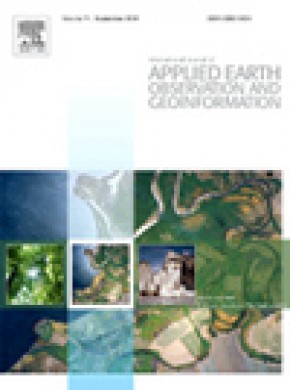
中科院分區(qū) 1區(qū)

中科院分區(qū) 1區(qū)
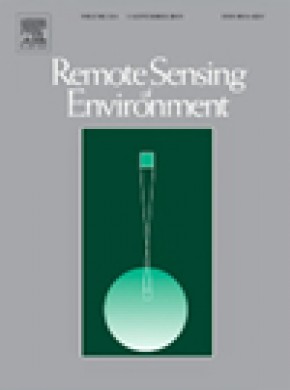
中科院分區(qū) 1區(qū)

中科院分區(qū) 1區(qū)

中科院分區(qū) 1區(qū)
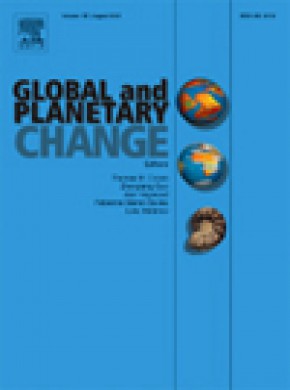
中科院分區(qū) 1區(qū)
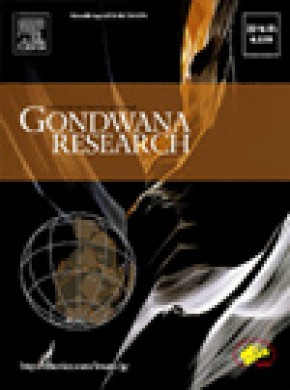
中科院分區(qū) 1區(qū)
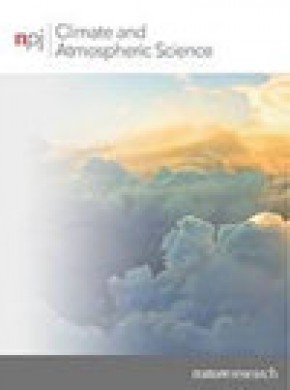
中科院分區(qū) 1區(qū)